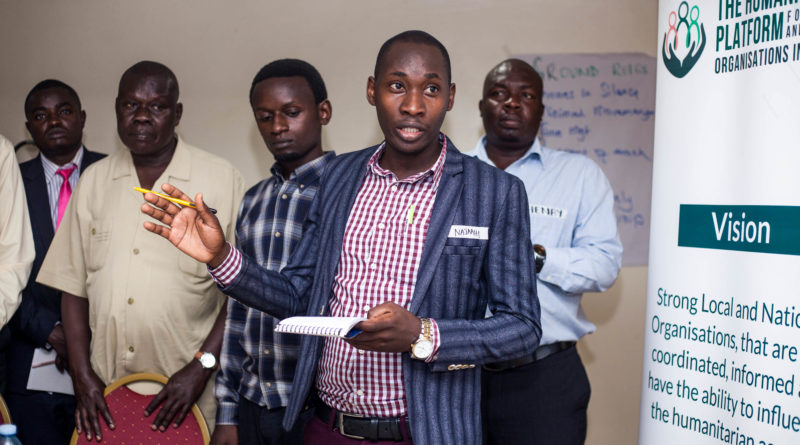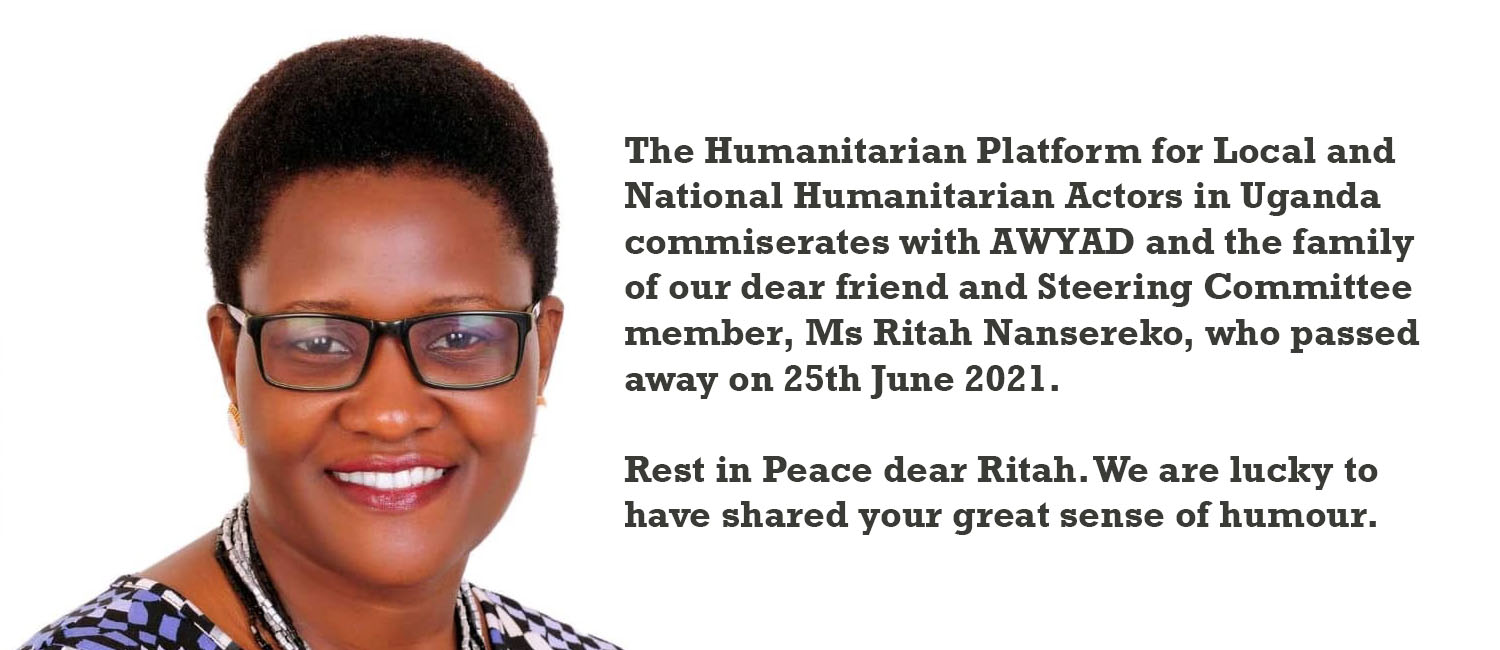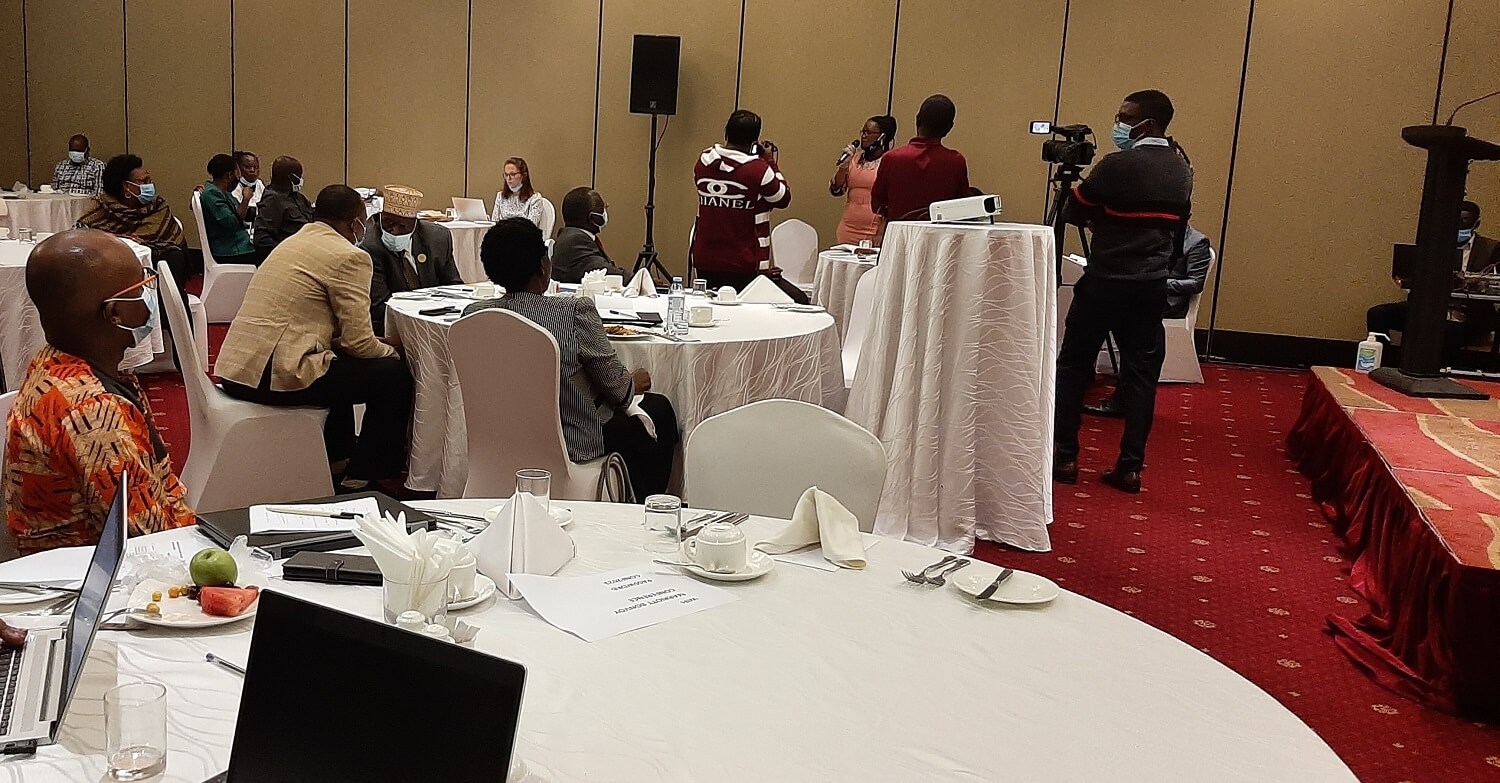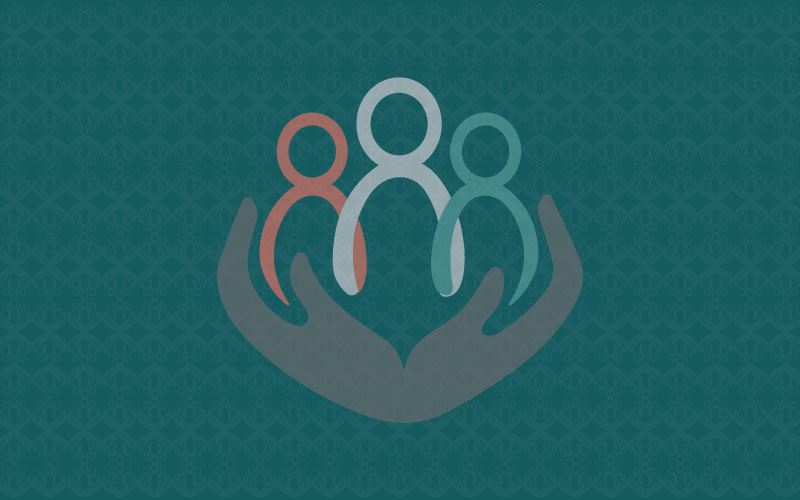
The power of Advocacy and Documentation: how far can we go?
Despite investing more than a decade and millions of dollars in capacity building, governments and other humanitarian actors still face significant capacity challenges in order to effectively manage humanitarian response. key among these challenges include the short-term, ad-hoc and disconnected nature of the training agenda, aggravated by lack of a systematic, sector wide, capacity needs assessment and strategic capability strategy and training/education framework.
As such; June 2018, the Humanitarian Platform for Local and National Organisations in Uganda undertook a Capacity Needs Assessment to establish the core strengths and weaknesses of the local and national organizations to prepare and respond to the humanitarian needs for the affected communities in Uganda. According to the report, only 37% of the CSOs assessed were functioning well on the component of networking, coordination and advocacy in relation to humanitarian emergency response forming the baseline for the capacity development training.
Advocacy
On 3rd December 2018, the Humanitarian Platform opened the 2 days capacity development training at Esella Country Hotel, Kampala; with ‘advocacy’ as one of the areas still weak in the humanitarian sector, most especially in Uganda. This training featured over 30 members of the Humanitarian Platform who initially scored relatively low during the Capacity Needs assessment carried out by the platform.
According to what has been noted over the years, the topic of advocacy has been biased and perceived to be a “fight back” tool especially between civil society organizations and government entities due to the pressure to account. However, it also important to note that projects which involve people affected by policy change in developing, implementing and monitoring advocacy work are more likely to achieve concrete change on the ground due to effective advocacy.
With the support from professional facilitators, members were taken through intense yet participatory hand on exercises which included experience sharing, brainstorming, open forum discussions and references of real-life scenarios in the Uganda context. During the advocacy training, participants were taken through the legal and institutional framework for advocacy and humanitarian and; where they generate the mandate to conduct advocacy.
It’s very important to understand the kind of issues one is intending to advocate for. Participants were taught to differentiate between humanitarian concepts like disaster, hazard, emergency and risk, a mistake many have made and continuously make. In addition, participants were taught to differentiate between advocacy, lobbying and activism to avoid using them interchangeably.
Documentation
On 4th December 2018, participants were taken through one of the most imperative blocks not only of advocacy but also other project/ programme areas like fundraising, reporting, storytelling among others. It is important to note that how one tells their story is what determines the perception or image from the external environment.
Documentation is broad and to mention but a few, entails reporting on activities and achieving the visual attention from various stakeholders, how to tailor messages for different audiences, video documentation, photography, organizational branding/ profiling and other avenues of documentation that bring about effective change in society such as policy briefs, issues papers, data among others. While local humanitarian actors continuously transform the lives of marginalized populations through their work, telling the story of this invaluable work to the world, remains a big challenge.
As such participants were taken through the winning power of writing for change, understanding the important formats of documenting, tailoring the message for different audiences. Participants had a knowledge café that involves grouping participants and having them rotate around different humanitarian communication products and answering questions on their importance to improving beneficiary livelihoods. From the documentation session, participants were able to construct success stories which will be featured in the quarterly newsletters.
At the end of training evaluation, participants appreciated the opportunity and recommended that the Humanitarian Platform should extent this support to regional platforms and allocate more time; partner with INGOs to conduct exchange visits intended to enhance capacity among members of the platform; follow up on members trained and continuously hold refresher trainings to be able to realize the impact. At end of the 2 days capacity development training, participants were able to link advocacy and documentation; and further deeply understand how, where, why and when the two concepts are applied.
Therefore with the recommendations aforementioned considered, the Humanitarian Platform will be able to support all the local and national NGOs to influence the Humanitarian Agenda.
Story by Clare Kyasiimire



